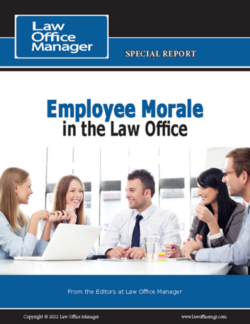Dear Team,
At [Law Firm Name], our top priority is the well-being and safety of our employees. We recognize that maintaining a safe work environment is crucial for our collective success. In light of this, we would like to provide you with important information and guidelines to ensure your safety while working at our law office. This briefing incorporates recommendations from the Occupational Safety and Health Administration (OSHA) to help us create a secure workplace for everyone.
- General Safety Measures: a. Emergency Procedures: Familiarize yourself with our office’s emergency evacuation routes, assembly points, and protocols for various situations, such as fires, natural disasters, and medical emergencies. b. Reporting Hazards: Promptly report any potential hazards, unsafe conditions, or incidents to your supervisor or the designated safety officer. c. Office Security: Adhere to our office’s security policies, including identification badge usage, visitor registration, and access control procedures. d. Ergonomics: Follow proper ergonomic practices to maintain good posture, prevent musculoskeletal disorders, and reduce workplace injuries. Adjust your workstation and use ergonomic equipment as necessary.
- Electrical Safety: a. Electrical Equipment Usage: Only use electrical equipment that is in good condition and free from damage or defects. Unplug equipment when not in use and avoid overloading power outlets. b. Electrical Cords: Keep electrical cords organized, free from frays or damage, and away from high-traffic areas to prevent tripping hazards.
- Fire Safety: a. Fire Exits: Ensure that fire exits and pathways are clear and unobstructed at all times. Do not block doors, corridors, or emergency exits with objects or personal belongings. b. Fire Prevention: Follow proper protocols for handling and disposing of flammable materials. Report any potential fire hazards, such as faulty electrical equipment or blocked fire extinguishers. c. Fire Drills: Participate actively in fire drills and familiarize yourself with the evacuation procedures and the location of fire extinguishers, alarms, and emergency exits.
- Hazard Communication: a. Chemical Safety: Take note of the Hazard Communication Program implemented in our office, which includes proper labeling, storage, and handling of hazardous substances. Refer to Safety Data Sheets (SDS) for detailed information on chemicals. b. Personal Protective Equipment (PPE): Use appropriate PPE, such as gloves, safety glasses, or masks, when handling hazardous substances or engaging in tasks that require protection.
- Workstation Safety: a. Slip, Trip, and Fall Prevention: Keep walkways clear of obstacles and report any spills or potential hazards. Use floor mats or non-slip surfaces when needed. b. Storage Safety: Maintain organized and clutter-free workstations, storage areas, and common areas to prevent injuries and facilitate easy access to emergency exits.
- Personal Well-being: a. Mental Health: Prioritize your mental well-being and seek support if needed. Utilize available resources, such as Employee Assistance Programs, counseling services, or designated contacts within the organization. b. Wellness Programs: Engage in wellness initiatives offered by the company, such as exercise programs, mindfulness activities, or stress management workshops.
Remember, safety is a collective responsibility. By following these guidelines and reporting any safety concerns, we can maintain a secure work environment for everyone. If you have any questions, please reach out to your supervisor or our designated safety officer.
Stay safe and thank you for your commitment to maintaining a safe workplace!
Best regards,
[Your Name] [Your Position] [Law Firm Name]
Note: The content provided in this briefing is a general overview and should be adapted to suit the specific safety needs of your law office. Ensure that you comply with local regulations and consult with relevant authorities to ensure the highest level of safety.


